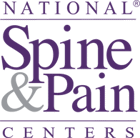Managing Chronic Pain Without Potent Pain Medications
- Category: Pain Management
- Written By: NSPC Team
Managing chronic pain without potent pain medications is a goal for many patients as the risks of long-term misuse become evident. On one hand, chronic pain conditions (nerve pain, arthritis, low back pain) are affecting a growing segment of America’s population — on the other hand, a full-blown potent pain medications crisis continues to make headlines due to medication misuse, overdose, and addiction.
Faced with the serious risks associated with potent pain medication use, pain specialists seek alternative comprehensive treatment for their patients.
At NSPC, we feel it is important to communicate with our patients and offer them the appropriate treatments for chronic pain without the use of potent pain medications.
What are Potent Pain Medications?
Potent pain medications work by targeting the central nervous system to modulate pain signals, either by blocking the transmission of pain messages or by altering the brain's perception of pain. These medications are typically prescribed in cases where the pain significantly interferes with daily activities and quality of life.
However, due to their high efficacy and potential for dependence and abuse, healthcare professionals strictly regulate and monitor them. These medications are typically prescribed under close supervision and may require frequent dosage adjustments to balance pain relief with potential side effects.
This is why many physicians recommend non-potent pain medication treatments to eligible patients.
Risks of Potent Pain Medications
While effective in managing severe pain, potent pain medications carry significant risks that must be carefully considered.
- Addiction and dependence
- A build-up of tolerance
- Side effects including nausea, constipation, and drowsiness
- Overdosing
It is crucial for healthcare providers to closely monitor patients on these medications, assess their individual risk factors, and provide appropriate education and support to minimize these risks and promote safe and responsible use.
Alternative Treatments to Potent Pain Medications
Non-Potent Pain Medications
These medications work through different mechanisms. When you take your medications on a schedule, you maintain the right level of medicine in your blood and prevent pain flare-ups.
Common types of medications for pain relief:
- Acetaminophen (Tylenol) – An over-the-counter pain reliever used for osteoarthritis, lower back pain, and migraine.
- Nonsteroidal Anti-Inflammatory Drugs (NSAIDs) – Over-the-counter medicines for inflammation relief, such as Naproxen (Aleve) or aspirin are used for osteoarthritis and minor muscle or tendon aches.
- Prescription anti-inflammatories – Medications such as Celecoxib (Celebrex) are effective for low back pain without sciatica (nerve pain that travels down the leg).
- Anti-seizure medications – Anti-seizure medications such as Pregabalin (Lyrica), and Gabapentin (Neurontin) can also treat pain. They are often used for nerve pain including diabetic foot pain, herpes zoster pain, or fibromyalgia.
- Antidepressants – At low doses, medications such as Amitriptyline (Elavil) or Duloxetine (Cymbalta) can treat nerve pain.
- Topical Agents (creams, sprays, patches) – A great first-line treatment. They are safer because they lack the widespread body effects of medications in pill form. Examples: Lidocaine cream or patches for nerve pain.
Injections
This fast, minimally invasive option can provide relief to many patients. Your NSPC-affiliated pain specialist performs injections in their office, often taking less than 10 minutes, and you get to go home shortly after. These procedures are typically offered before you consider more invasive options.
- Steroid Injections – Your pain specialist places medicine next to your back, joint, or nerve pain area. Effects can last days to months. Your pain may stop permanently.
- Regenerative Injections – Your own cells and platelet growth factors are injected in your area of pain in order to relieve low back pain and treat other joint areas such as knees, shoulders, and hips.
Minimally-Invasive Procedures
- Kyphoplasty – This procedure restores your backbones' original height and angle by placing filler material in bone areas that need it. It is used to treat fractures in patients with osteoporosis.
- Radiofrequency Ablation – This treatment uses heat to treat a certain nerve that is causing joint pain. It can stop pain in arthritic or injured joints in the neck, back, pelvis, and knees.
- Spinal Cord or Dorsal Root Ganglion Stimulators – These therapies relieve pain by blocking pain messages before they reach the brain. Instead of feeling pain, patients feel a tingling sensation. They are used for chronic pain in the back, arms, legs, and other areas. Your pain specialist places a small battery-operated device in your back. It sends electrical pulses to your spinal cord or neighboring structures (such as the dorsal root ganglion) and blocks pain signals.
- Peripheral Nerve Stimulators – These devices send healing bursts of electricity to treat pain caused by a specific nerve. They are useful for arm, leg, and face pain.
Additional Treatments
There are additional, non-medication-related tactics many patients with chronic pain have found to be successful. These allow you to take control of your pain and adopt helpful coping mechanisms on your own schedule. These treatments improve your general well-being and usually show fast results:
- Exercise
- Meditation
- Assisted therapies (massage, acupuncture)
Be sure to consult with your NSPC-affiliated physician before making any drastic changes to your routine.
Seek Care with NSPC’s Affiliated Network of Physicians
If you are living with chronic pain and are interested in finding a solution without potent pain medications, reach out to one of our affiliated specialists today!

.jpg)

